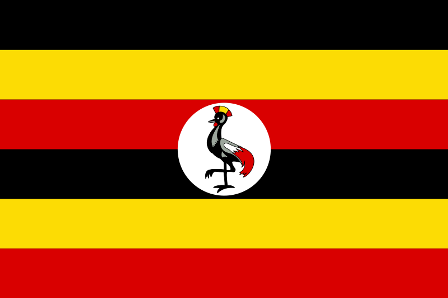One of these following facts about Uganda might be best for you to know. As you know, Uganda is a landlocked country in East Africa. It is bordered on the east by Kenya, on the north by South Sudan, on the west by the Democratic Republic of the Congo, on the southwest by Rwanda, and on the south by Tanzania. The southern part of the country includes a substantial portion of Lake Victoria, shared with Kenya and Tanzania, situating the country in the African Great Lakes region. To get to know more about this country, here are some other facts about Uganda you might like to know.
Facts about Uganda 1: Original Name
Uganda takes its name from the Buganda kingdom, which encompasses a large portion of the south of the country including the capital Kampala. The people of Uganda were hunter-gatherers until 1,700 to 2,300 years ago, when Bantu-speaking populations migrated to the southern parts of the country.
Facts about Uganda 2: Independence
Uganda gained independence from Britain in 1962, maintaining its Commonwealth membership. The first post-independence election, held in 1962, was won by an alliance between the Uganda People’s Congress and Kabaka Yekka.
Facts about Uganda 3: Environment and Conservation
Uganda has 60 protected areas, including ten national parks: Bwindi Impenetrable National Park and Rwenzori Mountains National Park, Kibale National Park, Kidepo Valley National Park, Lake Mburo National Park, Mgahinga Gorilla National Park, Mount Elgon National Park, Kenya National Park, Murchison Falls National Park, Queen Elizabeth National Park, and Semuliki National Park.
Facts about Uganda 4: Government
The President of Uganda, currently Yoweri Kagura Museveni, is both head of state and head of government. The President appoints a Vice-President and a prime minister who aid him in governing. The parliament is formed by the National Assembly, which has 332 members. 104 of these members are nominated by interest groups, including women and the army.
Facts about Uganda 5: Political Divisions
Uganda is divided into districts, spread across four administrative regions: Northern, Eastern, Central (Kingdom of Buganda) and Western. The districts are subdivided into counties. A number of districts have been added in the past few years, and eight others were added on 1 July 2006 plus others added in 2010. There are now over 100 districts. Most districts are named after their main commercial and administrative towns.
Facts about Uganda 6: Military
In Uganda, the Uganda People’s Defence Force serves as the military. The number of military of personal in Uganda has an estimated 45,000 on active duty.
Facts about Uganda 7: Economy
The Bank of Uganda is the Central bank of Uganda and handles monetary policy along with the printing of the Ugandan shilling. Uganda’s economy generates income from annual exports that include coffee ($466.6 million), tea ($72.1 million), fish ($136.2 million), and other products. The country has commenced economic reforms and growth has been robust.
Facts about Uganda 8: Poverty
Uganda is one of the poorest nations in the world, with 37.7% of the population living on less than $1.25 a day. Despite making enormous progress in reducing the countrywide poverty incidence from 56% of the population in 1992 to 31% in 2005, poverty remains deep-rooted in the country’s rural areas, which are home to more than 85 per cent of Ugandans.
Facts about Uganda 9: Transport
Uganda’s transport infrastructure includes four railway lines, developed by the Uganda Railways Corporation. There are also four airports with paved runways, and 22 unpaved runways.
Facts about Uganda 10: Language
Around forty different languages are regularly and currently in use in the country. These fall into three main language families: Bantu, Nilotic, and Central Sudanic. English became the official language of Uganda after independence, and Ugandan English is a local variant dialect.
Hope you would find those Uganda facts really interesting and useful for your additional reading.










 www.PortlandPayday.Loans
www.PortlandPayday.Loans